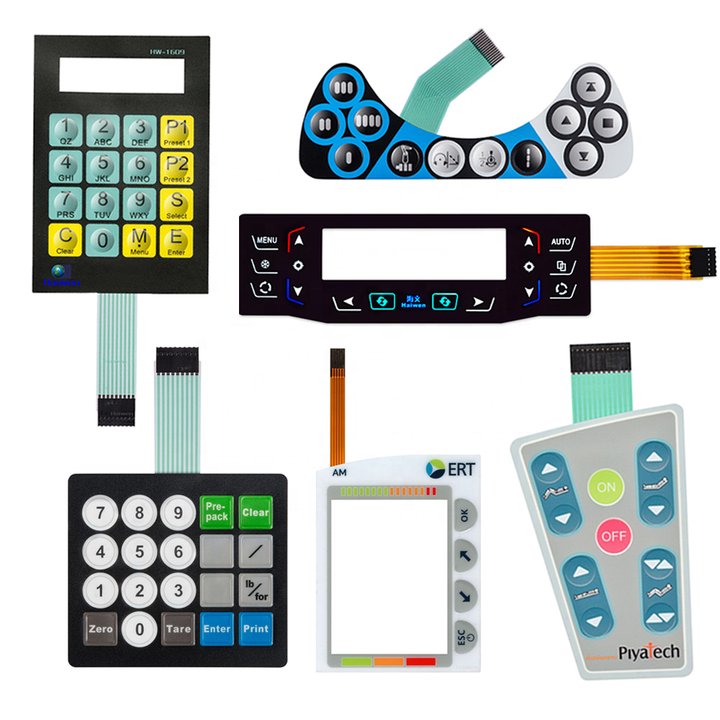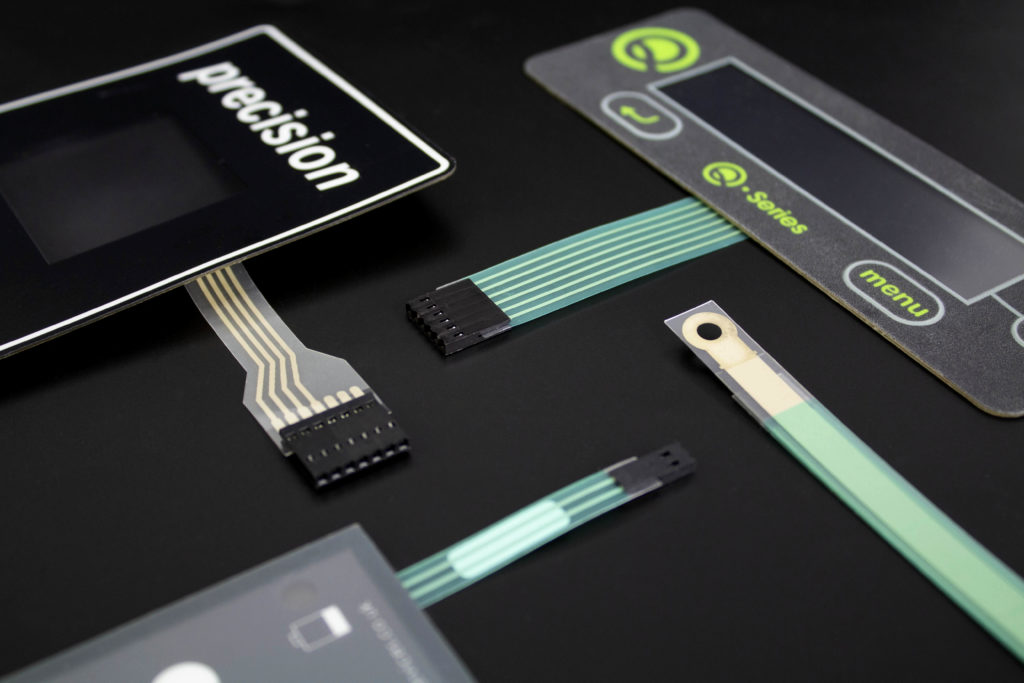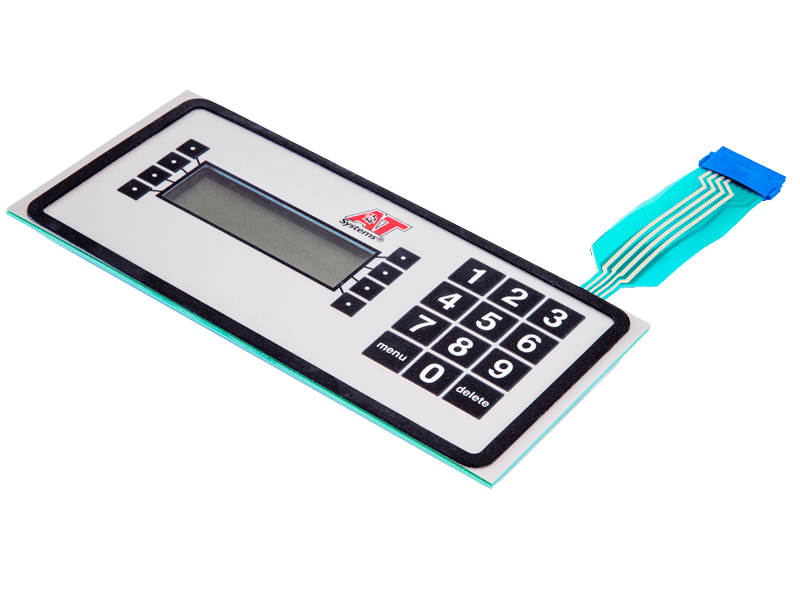Custom Membrane Switches for Specialized Applications: A Deep Dive
Custom Membrane Switches for Specialized Applications: A Deep Dive
Blog Article
Recognizing the Relevance of Membrane Switches in Interface
Membrane switches are essential parts in the layout of effective interface, facilitating not only functionality yet also enhancing visual allure and user communication. Their special functions, such as resistance to environmental factors and customizable designs, make them ideal for a varied range of applications throughout multiple sectors. As we explore the different benefits and future patterns associated with Membrane modern technology, it comes to be clear that these buttons are more than simply components; they represent a convergence of innovation and usefulness. The ramifications of this technology on user experience are worth checking out better.
What Are Membrane Buttons?

The spacer layer, which contains glue properties, permits the splitting up of the circuit layer from the overlay, ensuring that the switch stays in a non-activated state till pressed. When stress is put on the overlay, it presses the spacer layer, linking the void and finishing the circuit in the underlying layer. This style not just decreases the physical space needed for typical mechanical buttons however also boosts the durability of the device, as Membrane buttons are normally resistant to dirt, moisture, and various other environmental aspects.
Generally located in applications varying from customer electronic devices to medical tools, Membrane buttons are essential to modern innovation, providing a efficient and straightforward user interface that straightens with modern layout requirements.
Benefits of Membrane Switches
While numerous switch innovations exist, Membrane Switches deal unique benefits that make them particularly desirable in different applications. Among the key benefits of Membrane buttons is their small layout, which permits space-saving implementations in devices where realty is limited. Their thin profile not only enhances aesthetic appeal however additionally helps with light-weight construction.
An additional significant benefit is their resistance to ecological variables. Membrane buttons are commonly secured against dampness, dirt, and impurities, making them excellent for use popular atmospheres, such as medical devices and industrial devices. This resilience extends the life-span of the switch, decreasing maintenance expenses and boosting reliability.
Furthermore, Membrane buttons can be personalized to satisfy particular layout requirements, incorporating special graphics and shades that enhance user interaction. Their tactile responses options can additionally be tailored to supply an enjoyable individual experience. Furthermore, Membrane buttons are economical, specifically in high-volume applications, as they can be created efficiently.
Applications in Various Industries

In the consumer electronic devices market, Membrane switches are widespread in devices such as microwaves, cleaning equipments, and remotes. Their responsive feedback and aesthetic options enhance user experience while providing a sleek, modern look. In addition, vehicle producers use Membrane switches in dashboard controls and infomercial systems, where space is restricted, and individual interaction is vital.
In addition, the industrial market leverages Membrane buttons in control panels for equipment and devices, permitting intuitive procedure in typically severe environments. Their resistance to chemicals and wetness makes certain durability and integrity in these applications. In general, the versatility of Membrane Switches contributes substantially to their prevalent use, making them crucial in various technical domain names.
Design Considerations for Membrane Buttons

When developing Membrane buttons, a number of key factors to consider have to be taken into account to make sure optimal functionality and individual experience. To start with, the choice of materials is critical; selecting durable, top notch substrates can boost the button's durability and resistance to ecological elements such as wetness and temperature level changes.
Second of all, the style of the graphic overlay should prioritize clearness and convenience of use. Symbols and text have to be readable, and the format ought to assist in intuitive communication (membrane switches). Furthermore, tactile comments is crucial; including a tactile dome or other devices can enhance the customer experience by supplying physical verification of activation
Another important aspect is the button's electrical performance. Designers have to make sure that the conductive traces are properly made to minimize resistance and avoid signal interference. This involves evaluating the required actuation pressure and making certain compatibility with the electronic components they will certainly user interface with.

Future Fads in Membrane Innovation
As modern technology remains to advancement, Membrane buttons are positioned to evolve considerably, driven by developments in products and manufacturing methods. One emerging pattern is the incorporation of sophisticated products, such as flexible substrates and conductive inks, which improve sturdiness and reduce the total weight of Membrane buttons. These materials not only enhance the tactile action yet additionally enable the layout of switches that can withstand harsher ecological problems.
In addition, the combination of touch-sensitive technologies is changing standard Membrane Switches into even more interactive interface. Capacitive touch sensors embedded within Membrane switch panels can provide an extra user-friendly and responsive user experience, lining up with the growing need for smooth, contemporary layouts in customer electronic devices.
Additionally, improvements in printing techniques, such as electronic and 3D printing, enable fast prototyping and personalization of Membrane buttons. This versatility allows suppliers to react quicker to market needs and consumer choices.
Lastly, sustainability is becoming a considerable focus, with manufacturers exploring environmentally friendly materials and processes. As these trends unfold, the future of Membrane technology guarantees improved functionality, visual allure, and environmental duty, strengthening their role in sophisticated customer interfaces across various markets.
Conclusion
In verdict, Membrane Switches represent an essential element in the design of customer interfaces, combining performance with visual adaptability. As improvements Homepage in innovation proceed, the development of Membrane switches is expected to further fine-tune customer interfaces, driving advancement and boosting usability in a progressively intricate technological landscape.
Membrane buttons are integral components in the style of reliable customer interfaces, helping with not only functionality however additionally boosting visual allure and user interaction.Membrane Switches offer as an essential part in various user interfaces, helping with a seamless interaction between users and electronic devices.While numerous button modern technologies exist, Membrane Switches offer unique advantages that make them especially desirable in numerous applications.Moreover, Membrane switches can be personalized to meet specific layout demands, integrating distinct graphics and colors that boost individual communication.In verdict, Membrane Switches represent a vital part in the style of customer interfaces, combining functionality with visual versatility.
Report this page